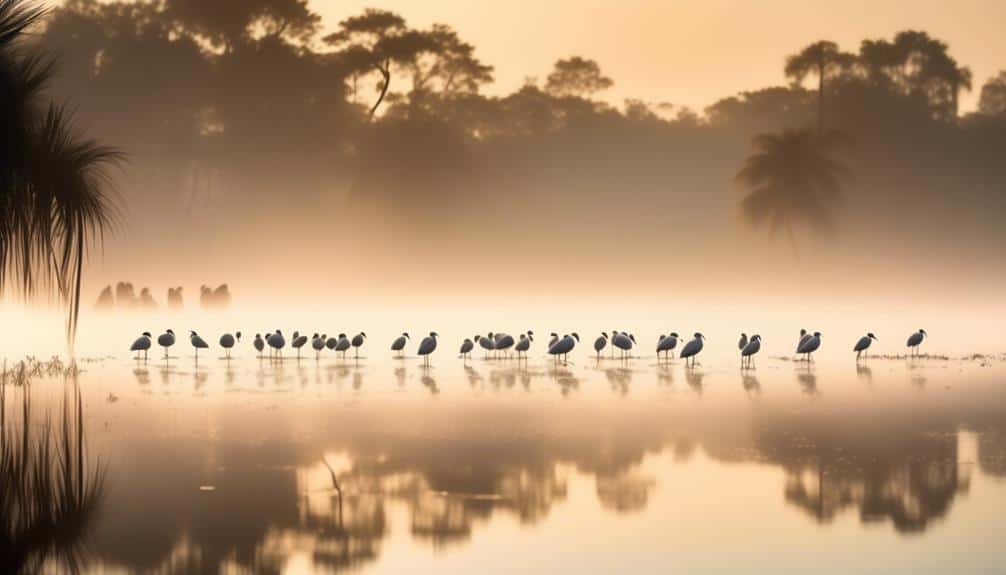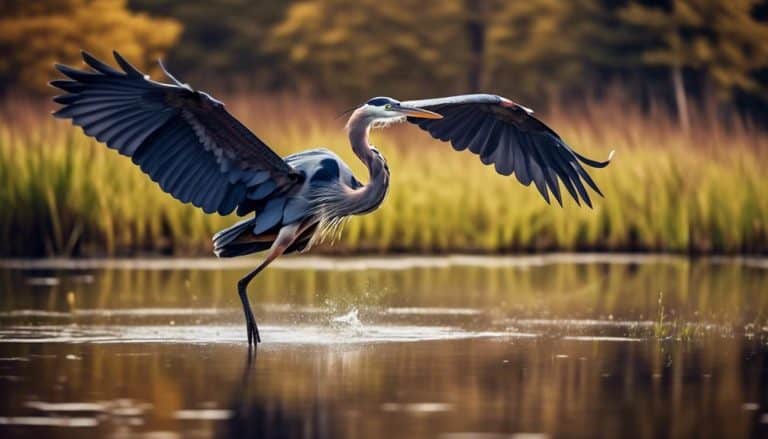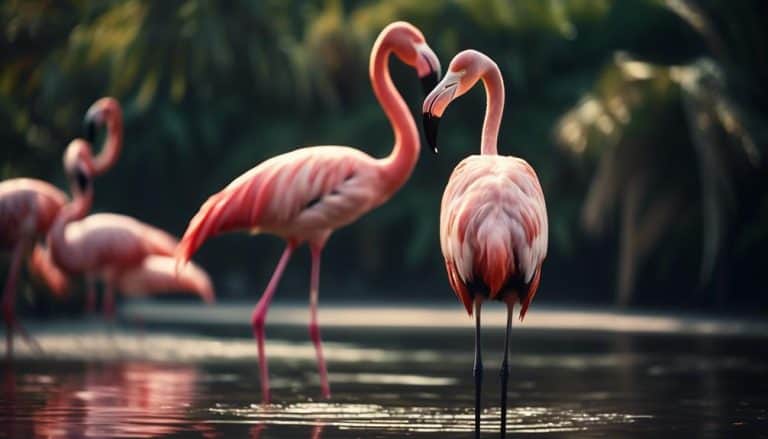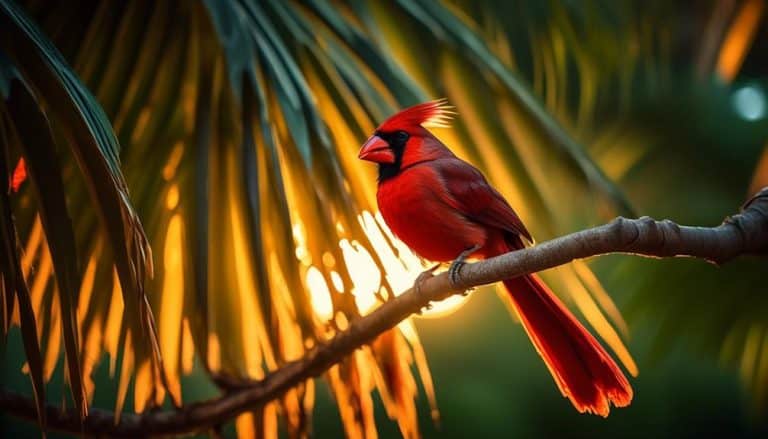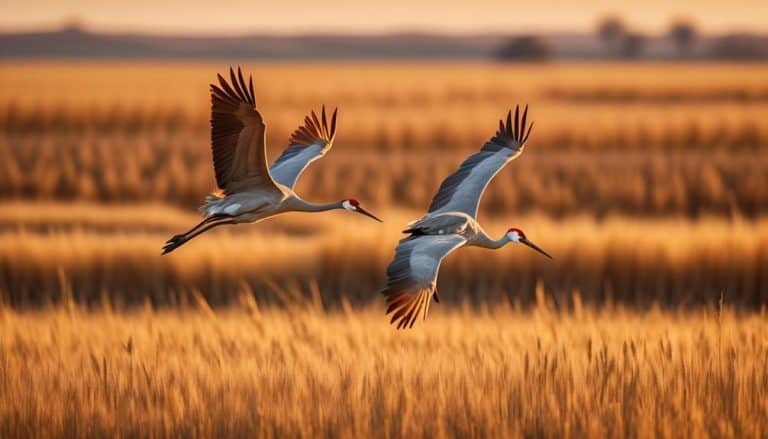I’ve always been fascinated by the rich diversity of bird species that call Florida home. Recently, I heard a theory that white birds with long beaks are scattered throughout the state. Intrigued, I set out to uncover the truth behind this claim.
As I began my investigation, I was astonished by what I discovered about these mysterious birds. Their unique physical characteristics, habitat preferences, and feeding habits all contribute to their enigmatic presence in the Sunshine State.
Join me as we explore the world of these white birds with long beaks and unravel the secrets they hold.
Physical Characteristics of White Ibises
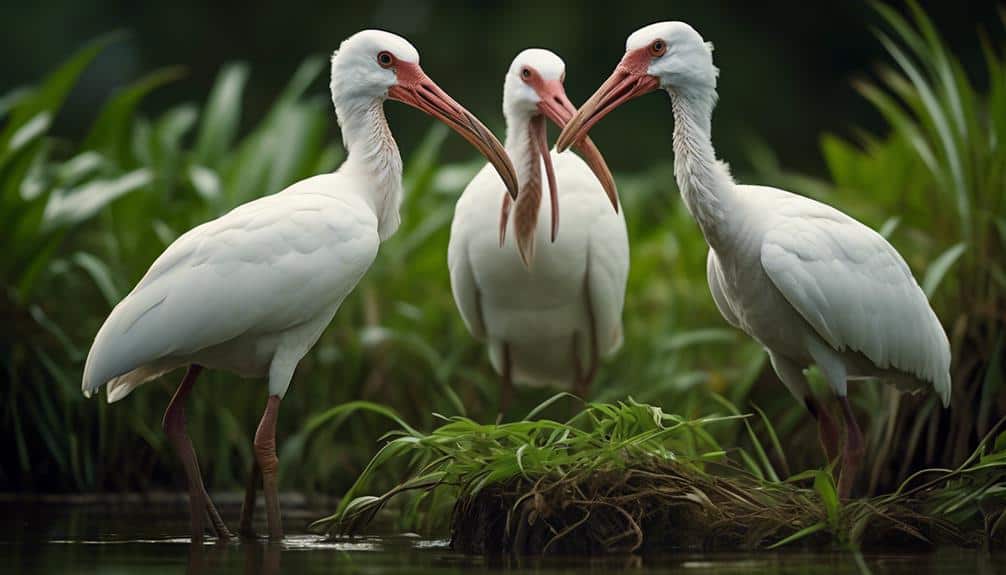
White ibises, known scientifically as Eudocimus albus, possess distinct physical characteristics that set them apart from other bird species found in Florida. One of the most notable features of white ibises is their striking feather coloration. As their name suggests, these birds have predominantly white plumage, with black wingtips that create a striking contrast. Their long, curved beaks are another characteristic adapted for their unique foraging techniques.
The white plumage of ibises serves several purposes. Firstly, it provides camouflage in their natural habitat, which includes marshes, swamps, and wetlands. The white color helps them blend in with the surroundings, making it easier to approach prey undetected. Additionally, the contrasting black wingtips are thought to aid in communication among flock members as they engage in synchronized flight patterns and other social behaviors.
Their long, curved beaks are well-suited for their foraging techniques. White ibises feed on small aquatic creatures such as insects, crustaceans, and small fish. They use their beaks to probe into the muddy substrate, feeling for prey and swiftly extracting it. The curvature of their beaks allows for precise and efficient foraging, enabling them to capture their food successfully.
Habitat and Distribution of White Ibises in Florida
The habitat and distribution of white ibises in Florida can be attributed to their specific ecological preferences and migratory patterns.
White ibises are highly adaptable birds found in various wetland habitats throughout the state, including marshes, swamps, and mangrove forests. They’re also commonly seen in urban areas, foraging in parks, golf courses, and residential neighborhoods.
White ibises in Florida exhibit both resident and migratory populations. The migratory patterns of these birds are closely tied to the availability of food and water. From February to July, white ibises form large colonies and build nests in trees or shrubs near water during the breeding season. After the breeding season, some individuals migrate to other parts of Florida or other states, such as Georgia or South Carolina, in search of more favorable foraging conditions.
In their habitats, white ibises interact with various other bird species. They often forage alongside other wading birds, such as herons and egrets, forming mixed feeding flocks. These birds have similar feeding habits and can benefit from each other’s presence by collectively searching for food and increasing their chances of finding prey. However, resource competition can also occur, especially during times of scarcity.
Feeding Habits and Diet of White Ibises
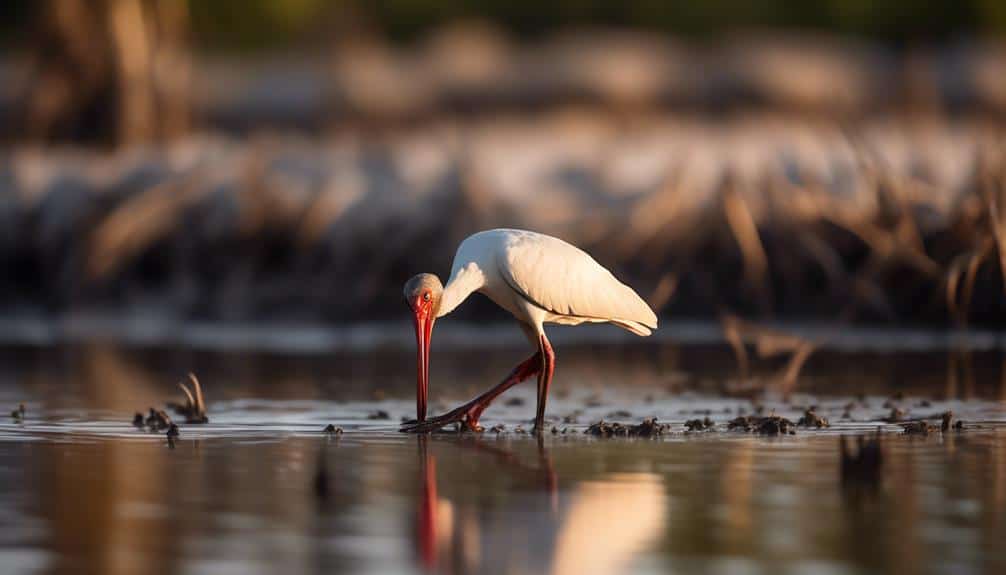
Feeding primarily on small aquatic invertebrates, fish, and amphibians, white ibises have a diverse diet that’s well-suited to their wetland habitats. These birds employ various foraging techniques to gather food, making them highly adaptable and efficient hunters.
Here are some interesting facts about the feeding habits and diet of white ibises:
- Probing: White ibises use their long, curved beaks to probe the mud and shallow waters for prey. They insert their beaks into the substrate and search for invertebrates such as insects, worms, and crustaceans.
- Probing in groups: These birds often forage, forming a line and moving together to flush out prey from the vegetation. This cooperative behavior allows them to cover a larger area and increase their chances of finding food.
- Filter feeding: White ibises also engage in filter feeding, where they use their beaks to filter small fish and aquatic invertebrates from the water. They sweep their bills through the water, trapping food particles in their specialized bill grooves.
White ibises are non-migratory birds, meaning they don’t undertake long-distance migrations. Instead, they’re highly nomadic and move within their range for suitable feeding grounds. This flexibility enables them to exploit different wetland habitats and ensure a constant food supply.
Breeding and Nesting Behavior of White Ibises
During the breeding season, white ibises exhibit intricate mating rituals and construct elaborate nests in preparation for the arrival of their offspring. These birds engage in group dynamics, forming large breeding colonies where they establish territories and courtship displays. The breeding success of white ibises relies heavily on their ability to form strong pair bonds and defend their nesting sites.
To better understand the breeding behavior of white ibises, let’s take a closer look at their nesting habits. These birds typically build their nests in trees or shrubs, using sticks, leaves, and other vegetation. The nests are often located in colonies, protecting against predators and increasing the chances of successful breeding.
To illustrate the group dynamics involved in white ibis breeding, let’s examine the following table:
| Breeding Colony | Nesting Territory | Breeding Success |
|---|---|---|
| Large | Well-defended | High |
| Small | Less protected | Low |
| Isolated | Vulnerable | Very low |
As shown in the table, white ibises that form large colonies and establish well-defended nesting territories have a higher breeding success rate than those in smaller or isolated colonies. This highlights the importance of group dynamics in ensuring the survival and reproduction of these birds.
Conservation Efforts for White Ibises in Florida
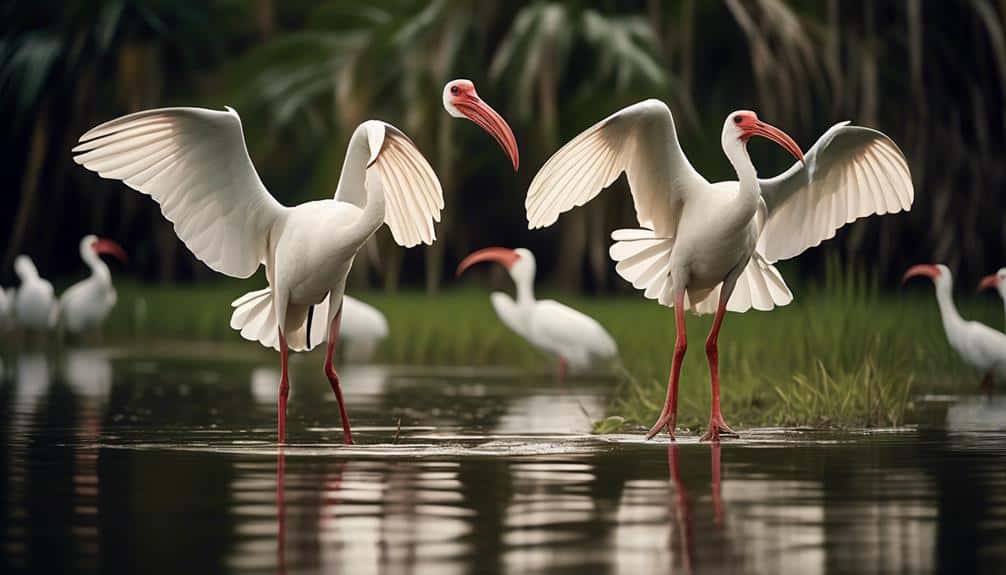
While understanding the breeding behavior of white ibises is crucial, it’s equally important to address the conservation efforts aimed at preserving these birds in Florida. These efforts are essential in ensuring the white ibis population’s long-term survival and maintaining the region’s ecological balance.
Here are three key aspects of the conservation efforts for white ibises in Florida:
- Mitigating the impact of climate change: Climate change poses a significant threat to the white ibis population. Rising sea levels and increased frequency of extreme weather events can disrupt their nesting grounds and food sources. Conservationists are actively monitoring the impact of climate change on white ibises and implementing strategies to protect their habitats from these changes.
- Habitat preservation and restoration: Humans play a crucial role in conserving white ibises. Efforts are being made to preserve and restore the wetland areas that serve as important nesting and foraging grounds for these birds. Protecting these habitats can ensure a sustainable environment for the white ibises to thrive.
- Public education and awareness: Educating the public about the importance of white ibis conservation is vital. By raising awareness about these birds’ significance in maintaining wetland ecosystems’ health, we can encourage individuals to support conservation efforts and take action to protect these beautiful creatures.
Frequently Asked Questions
What Is the Average Lifespan of a White Ibis in Florida?
The average lifespan of a white ibis in Florida is around 15 years. These birds have fascinating migration patterns, traveling long distances to find suitable habitats throughout the year.
Do White Ibises Migrate to Other States During Certain Seasons?
White ibises in Florida have variable migration patterns influenced by factors such as food availability and weather conditions. Population trends of these birds are influenced by various ecological factors.
Are White Ibises Known to Be Aggressive Towards Humans or Other Animals?
White ibises are not known to be aggressive towards humans or other animals. They exhibit peaceful behavior towards other birds and have specific feeding habits.
How Do White Ibises Communicate With Each Other?
White ibises communicate through vocalizations, body movements, and displays. They use calls to maintain contact with their group and during mating rituals. They also engage in synchronized feeding, where individuals coordinate their movements to find food efficiently.
Can White Ibises Swim?
Yes, white ibises can swim! They gracefully glide through the water, like a swan on a serene lake. Although they primarily forage for food on land, they will swim to escape predators or cross bodies of water.
Conclusion
As I watched the white ibises with their long beaks gracefully wading through the Florida marshes, I couldn’t help but be captivated by their elegance and beauty.
These birds, with their distinctive physical characteristics and unique feeding habits, have found a home in the diverse habitats of Florida.
While their breeding and nesting behaviors are fascinating, it’s crucial that we continue our conservation efforts to ensure the survival of these magnificent creatures in our ever-changing world.

